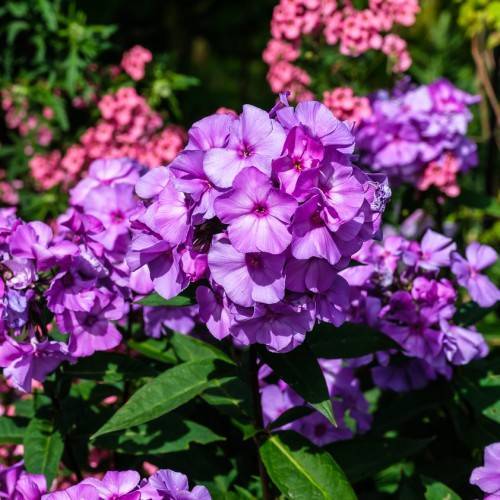
garden phlox
Phlox arendsii 'Hesperis'
Cycle:
Herbaceous Perennial
Watering:
Average
Hardiness Zone:
4 - 8
Flowers:
Flowers
Sun:
Full sun,part shade
Leaf:
Yes
Growth Rate:
High
Maintenance:
Moderate
Drought Tolerant:
Yes
Care Level:
Medium
watering
Garden phlox should be watered regularly to maintain healthy growth. Water deeply, about once a week - enough to moisten the entire root zone. Avoid letting the soil dry out completely between waterings. During hot, dry weather, you may need to water more often. Be careful not to over-water. That can cause root rot and prevent flowers from opening. Check the soil 1-2 inches below the surface to make sure it is moist but not soggy.
sunlight
Garden phlox (Phlox arendsii 'Hesperis') need full sunlight for optimal growth. This means at least 6 hours of direct sunlight a day, especially during the flowering season which is usually from late spring through summer months. If the plant has insufficient sunlight, it may become leggy and fail to produce many blooms. Keeping the plant in a sunny area will help ensure there is adequate light for healthy growth and plenty of flowers.
pruning
Garden phlox (Phlox arendsii 'Hesperis') should be pruned annually in late winter to early spring. Pruning should begin when the weather starts to warm--typically when temperatures are above 40 degrees Fahrenheit. During this time, you should cut any excess plants or stalks that have become too large or overgrown for the desired look. Be sure to cut all stalks back to the point of desired density, leaving several inches of space between each remaining stalk. Additionally, remove any dead, diseased, or discolored tissue from the plants. Finally, prune off any remaining flowers or flower buds to encourage new growth.
